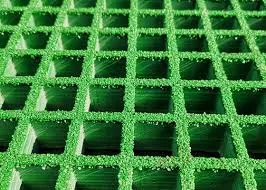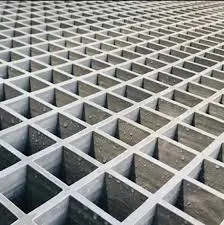
-
 Afrikaans
Afrikaans -
 Albanian
Albanian -
 Amharic
Amharic -
 Arabic
Arabic -
 Armenian
Armenian -
 Azerbaijani
Azerbaijani -
 Basque
Basque -
 Belarusian
Belarusian -
 Bengali
Bengali -
 Bosnian
Bosnian -
 Bulgarian
Bulgarian -
 Catalan
Catalan -
 Cebuano
Cebuano -
 China
China -
 China (Taiwan)
China (Taiwan) -
 Corsican
Corsican -
 Croatian
Croatian -
 Czech
Czech -
 Danish
Danish -
 Dutch
Dutch -
 English
English -
 Esperanto
Esperanto -
 Estonian
Estonian -
 Finnish
Finnish -
 French
French -
 Frisian
Frisian -
 Galician
Galician -
 Georgian
Georgian -
 German
German -
 Greek
Greek -
 Gujarati
Gujarati -
 Haitian Creole
Haitian Creole -
 hausa
hausa -
 hawaiian
hawaiian -
 Hebrew
Hebrew -
 Hindi
Hindi -
 Miao
Miao -
 Hungarian
Hungarian -
 Icelandic
Icelandic -
 igbo
igbo -
 Indonesian
Indonesian -
 irish
irish -
 Italian
Italian -
 Japanese
Japanese -
 Javanese
Javanese -
 Kannada
Kannada -
 kazakh
kazakh -
 Khmer
Khmer -
 Rwandese
Rwandese -
 Korean
Korean -
 Kurdish
Kurdish -
 Kyrgyz
Kyrgyz -
 Lao
Lao -
 Latin
Latin -
 Latvian
Latvian -
 Lithuanian
Lithuanian -
 Luxembourgish
Luxembourgish -
 Macedonian
Macedonian -
 Malgashi
Malgashi -
 Malay
Malay -
 Malayalam
Malayalam -
 Maltese
Maltese -
 Maori
Maori -
 Marathi
Marathi -
 Mongolian
Mongolian -
 Myanmar
Myanmar -
 Nepali
Nepali -
 Norwegian
Norwegian -
 Norwegian
Norwegian -
 Occitan
Occitan -
 Pashto
Pashto -
 Persian
Persian -
 Polish
Polish -
 Portuguese
Portuguese -
 Punjabi
Punjabi -
 Romanian
Romanian -
 Russian
Russian -
 Samoan
Samoan -
 Scottish Gaelic
Scottish Gaelic -
 Serbian
Serbian -
 Sesotho
Sesotho -
 Shona
Shona -
 Sindhi
Sindhi -
 Sinhala
Sinhala -
 Slovak
Slovak -
 Slovenian
Slovenian -
 Somali
Somali -
 Spanish
Spanish -
 Sundanese
Sundanese -
 Swahili
Swahili -
 Swedish
Swedish -
 Tagalog
Tagalog -
 Tajik
Tajik -
 Tamil
Tamil -
 Tatar
Tatar -
 Telugu
Telugu -
 Thai
Thai -
 Turkish
Turkish -
 Turkmen
Turkmen -
 Ukrainian
Ukrainian -
 Urdu
Urdu -
 Uighur
Uighur -
 Uzbek
Uzbek -
 Vietnamese
Vietnamese -
 Welsh
Welsh -
 Bantu
Bantu -
 Yiddish
Yiddish -
 Yoruba
Yoruba -
 Zulu
Zulu
Feb . 10, 2025 11:09
Back to list
frp housing
FRP housing, or Fiberglass Reinforced Plastic housing, is revolutionizing industries with its impressive combination of durability, lightweight nature, and resistance to environmental factors. This article delves into the qualities that make FRP housing an optimal choice for various applications, showcasing its unparalleled benefits and why businesses are increasingly opting for it.
Safety and compliance are another domain where FRP housing shines. With stringent safety standards governing industrial constructions, materials used must meet specific fire-retardancy qualities. FRP panels are manufactured to meet these requirements, satisfying not only safety but also regulatory demands. Industries, therefore, find FRP panels to be a trustworthy choice, ensuring their projects adhere to compliance standards while maintaining high safety levels for their workforce and clients. Environmental sustainability is becoming an ever-more prominent concern, and FRP housing aligns well with this focus. Being durable and long-lasting, these panels significantly reduce resource consumption and waste generation over the lifecycle of a project. Additionally, advancements in recycling technologies for composite materials suggest a positive future outlook for the environmental impact of FRP housing solutions. Supporting a transition from traditional materials, many case studies highlight successful implementations of FRP housing. A prominent example can be seen in the electrical distribution sector, where companies have adopted FRP enclosures to safeguard critical infrastructure components. Not only have they achieved enhanced protection and minimized downtime, but they have also reported greater resilience against environmental and man-made hazards. To conclude, the advent of FRP housing marks a significant advancement in material technology. Its exceptional physical properties, coupled with economic and environmental benefits, establish its position as a preferred choice across numerous industries. As businesses continue to prioritize efficiency, durability, and sustainability, FRP housing is poised to play a pivotal role in the global shift towards innovative and reliable solutions.


Safety and compliance are another domain where FRP housing shines. With stringent safety standards governing industrial constructions, materials used must meet specific fire-retardancy qualities. FRP panels are manufactured to meet these requirements, satisfying not only safety but also regulatory demands. Industries, therefore, find FRP panels to be a trustworthy choice, ensuring their projects adhere to compliance standards while maintaining high safety levels for their workforce and clients. Environmental sustainability is becoming an ever-more prominent concern, and FRP housing aligns well with this focus. Being durable and long-lasting, these panels significantly reduce resource consumption and waste generation over the lifecycle of a project. Additionally, advancements in recycling technologies for composite materials suggest a positive future outlook for the environmental impact of FRP housing solutions. Supporting a transition from traditional materials, many case studies highlight successful implementations of FRP housing. A prominent example can be seen in the electrical distribution sector, where companies have adopted FRP enclosures to safeguard critical infrastructure components. Not only have they achieved enhanced protection and minimized downtime, but they have also reported greater resilience against environmental and man-made hazards. To conclude, the advent of FRP housing marks a significant advancement in material technology. Its exceptional physical properties, coupled with economic and environmental benefits, establish its position as a preferred choice across numerous industries. As businesses continue to prioritize efficiency, durability, and sustainability, FRP housing is poised to play a pivotal role in the global shift towards innovative and reliable solutions.
Next:
Related Products









